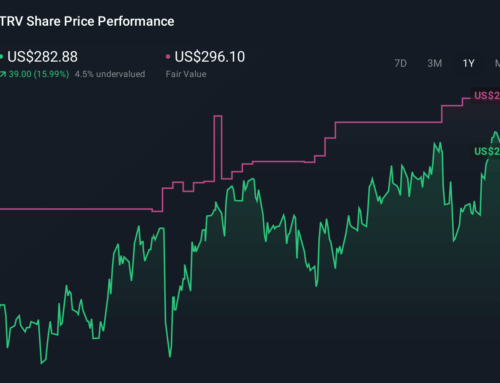If Money Could Grow: How the Young are Investing Early
May 17, 2025
When he was 10, Shreyas Joshi asked his father if he could get him a video game for Rs 800. What he got in return was a version of the well-worn parental lecture about “how money doesn’t grow on trees” and a clear setting of terms: that he would get the “expensive” gift only if he also bought a book – and promised to read it.
Growing up in the hill town of Ranikhet in Uttarakhand, Joshi, now 27, recalls the incident as one of his earliest lessons on financial discipline, one that made him want to “earn and invest more”.
“My parents are both teachers and would often tell us that we don’t have enough (money). My father is a school principal and won’t get a pension when he retires. That financial fear was passed down to me. I am still trying to navigate that fear,” says Joshi, sitting cross-legged on his bed in a one-bedroom house in the national Capital’s Mayur Vihar area that he shares with his sister, a student at Delhi University.
It would take Joshi two years to finally pick up the book his father got him, and much later, he would read another – Rich Dad Poor Dad, a 1997 personal finance classic by Robert T. Kiyosaki.
Joshi recalls being unimpressed by the idea in the book of “quitting your job to start a business” – a “very rich person thing to say and very difficult to do” – but one of the concepts stayed with him: the need for a financial cushion, one that “gives you the freedom to make certain decisions in life”. So at 23, when he got his first job, with a non-profit in Delhi, he decided to make his maiden foray into investing.
 Shreyas Joshi at his apartment in Delhi’s Mayur Vihar. (Express Photo by Chitral Khambhati)
Shreyas Joshi at his apartment in Delhi’s Mayur Vihar. (Express Photo by Chitral Khambhati)
Joshi is part of a generation of tech-savvy, time-crunched youngsters who have been brewing a not-so-quiet revolution in the stock market. Unlike their parents, who largely invested in immovable assets and trusted only the banks with their savings, these young professionals, armed with stock trading apps and advice from financial influencers, have higher risk appetites. They are actively trading in stocks, experimenting with cryptocurrency, speculating on price movements and putting money into mutual funds. According to the National Stock Exchange (NSE), in 2024, those under 30 were the “dominant investing group”. As of January 2025, youngsters accounted for over 40 per cent of the total registered investor base, up from just 22.7 per cent in 2018.
Show me the money
Growing up, Joshi says, he was mostly surrounded by a generation that “felt wealth protection involved only fixed deposits, and land or pension funds”. He asserts, “These are good for wealth preservation, but not so much for appreciation. I was always told that trading stocks was akin to gambling and you never know what could happen.”
He started cautiously — investing in blue-chip stocks (large, well-established companies) and one small-case bet recommended by an influencer. Soon, he pivoted to mutual funds, setting up systematic investment plans (SIPs), which he adjusted according to his salary increments and needs. By 2024, he was investing in US stocks — sticking to FAANGs (Facebook, Apple, Amazon, Netflix, Google) due to their relative stability.
What drives this generation to bet more and bigger than their parents ever did? A mix of old-world prudence and changing economic realities.
Story continues below this ad
Ashish Kulkarni, a visiting professor at Pune’s Gokhale Institute of Politics and Economics, says there isn’t one single factor driving youngsters to invest early. For one, he says, savings usually go “up on an intergenerational basis”.
“People who are, say, between the ages of 20 and 30 today have been born to parents who already had a certain level of savings to begin with and were much more likely to own a home and other immovable assets. That meant the pressure to buy a home wasn’t as important… Home ownership isn’t seen as a very critical, important thing, and that means that you (the youth) are much more likely to choose a different form of savings,” he says.
Second, he says, the likelihood of people getting higher paying jobs earlier in life becomes better over time, leaving them with more disposable incomes. He explains by way of a personal example he often uses in his classroom lectures.
“My dad started with a salary of Rs 300 per month in the early 1970s. Regardless of how cheap things were back then, there weren’t enough saving opportunities… But also, Rs 300 only takes you so far. I started my career in 2006 with a salary of Rs 30,000, and it may sound impossible and ridiculous… but in those days, I didn’t know how I was going to spend it. These days, Rs 30,000 is nothing. But kids these days will start with a higher salary than I did. And therefore, the likelihood that you will save is much higher,” says Kulkarni.
Story continues below this ad
But if higher disposable incomes are driving youngsters to save early, so is another reality: a tepid job market and stagnant wages, leaving people with no option but to invest. Besides, changing demographics have left youngsters in charge of ageing parents and grandparents. “While they may not have to buy homes – that has already been done by the earlier generations – they also need to invest in financial savings because the problems of the parents and the grandparents are much more likely to be health and social security. So you have not just the ability to save, but you also need to save,” says Kulkarni.
Experts say the democratisation in retail investment started around 2016. “The first tailwind was the demonetisation phase. Once money became digitised, the process (for investment) became hassle-free,” says an industry source.
Digital infrastructure such as Aadhaar-based eKYC (electronic know your customer) and online wealth management platforms made it easier to sign up for investments.
 Sarthak Mishra, at home in Kalkaji, with his cat. (Express Photo by Chitral Khambhati)
Sarthak Mishra, at home in Kalkaji, with his cat. (Express Photo by Chitral Khambhati)
Then came the pandemic. And with it, a pool of investors under the age of 30 grew significantly, even as the number of older investors saw a dip, according to the NSE data. Multiple lockdowns meant that everyone was online. More and more people were consuming — and making— YouTube videos or Instagram reels on free financial advice. The ‘Financial Independence, Retire Early’ (FIRE) movement videos, which advocated living frugally for early retirement, became all the rage.
Among those who rode this social media-fuelled wave all the way to the stock exchange was Sarthak Mishra, a 26-year-old lawyer who lives in a rented accommodation in New Delhi’s Kalkaji with his two cats.
Story continues below this ad
“I was really influenced by those videos. They work on FOMO (fear of missing out) and tell you that the earlier you start, the better it is. That’s what got to me,” Mishra confesses.
Like Joshi, Mishra too had largely been exposed to traditional saving methods espoused by his banker mother. “She always took care of our finances,” he says.
In 2021, Mishra took matters into his own hands and started investing his stipend from college internships into mutual funds and gold exchange traded funds (ETFs, which allow investors to get exposure to gold without physically owning it, tracking the price of gold and trading like stocks on exchanges).
Online videos are instrumental in driving away the fear of investing, says Prof Kulkarni. “When you watch a YouTube video of a person like you, speaking of their lived experience, it takes away some of the psychological fear that this is something only for older people,” he says.
Ayushi Shaw, who is pursuing a Master’s degree in finance from France, started investing when she was 18. After an early start, where she parked some of her pocket money into mutual funds, she has over the years diversified her investments to include stock, cryptocurrency, NFTs (non-fungible tokens that represent a unique asset like art, digital content or media and a savings account).
Her goal, however, remained consistent. “Like any other person, I want a car or a house but I want financial independence over everything. Whenever I choose to retire, I should have enough money to sustain myself and my partner,” she says.
Story continues below this ad
Shaw represents a rising wave of women investors taking charge of their finances. The NSE notes a gradual increase in female investors since 2022. As of February 2025, women made up 24.3 per cent of total registered investors.
Priti Rathi Gupta, founder of Lxme, a fintech platform for women, attributes this momentum to the rise in the number of women in the workforce. More women are not just earning their own money, but are also making independent choices on what to do with it, she adds.
Meme stocks and investment FOMO
Most agree to the benefits of investing young. “The earlier you start, the longer you give yourself the opportunity to invest in such a way that the vagaries of the market don’t affect you. Eventually, if markets are going up, you are likely to do well,” says Prof Kulkarni.
Yet, the problem arises when investing is seen as a “shortcut to riches”. Social media platforms like Reddit and Discord are rife with cautionary stories of loss, sometimes amounting to lakhs of rupees.
The Securities and Exchange Board of India (SEBI) had flagged this trend in its 2024 report, revealing a sobering statistic: nine of 10 traders who dabbled in futures and options (F&O) — a highly speculative part of the market — lost money. The portion of loss-makers among those under the age of 30 (93 per cent) was higher than in other age groups.
Story continues below this ad
Santosh Joseph, the founder of Germinate Investor Services, attributes this to a “spillover effect” from technologies offering instant gratification. “People don’t believe that it takes years to grow wealth. When you order something on Swiggy, Zomato or Zepto, it comes in 10 minutes. So, they think even their returns will also come in 10 minutes,” he says.
Then there is the fact that social media has “glamourised” investing, an otherwise “boring”, “slow” and “long-term” activity, Joseph says, adding, “You feel that if I am not buying this, I am missing out.”
Prof Kulkarni points to the example of “meme stocks”, where the shares of a company gain viral popularity due to heightened social sentiment. “At the height of the pandemic, many young investors were literally making investment decisions on stocks or cryptocurrency based on Internet hype. The idea of valuation being driven on vibe, to a dinosaur like me, is ridiculous,” chuckles the professor.
Arunabh, a 28-year-old data scientist, knows something about the price of blindly following finfluencers or financial influencers. He says he began picking stocks when he was 18, borrowing a few thousands from his father with the aim of “making money — quick and a lot of it”. Over the years, his portfolio was like any other, booking a few losses and some profits.
Story continues below this ad
Then, in 2021, with a steady income and a growing risk appetite, Arunabh started investing heavily in cryptocurrency. “Many of my decisions were driven by what I saw on YouTube or Twitter, and what influencers were saying. I didn’t have the time to do my own research. I think that’s where a lot of people get brainwashed,” he says.
By the end of 2022, his portfolio had lost 90 per cent of its value. “I was still learning at the time. I was 24-25 then and thought that this was the time to take risks,” Arunabh says, adding that he has clawed back his losses since then and also learnt to back online advice with his own research.
Regulators are now stepping in, recognising the need to weed out bad actors. Doubling down, in January, SEBI had prohibited finfluencers from using market price data of the preceding three months while communicating about securities (stocks, bonds etc.).
The way Bhuvanesh R, a business analyst at Zerodha, a major wealth management platform, sees it, young investors are bound to make rookie mistakes, but having a high-risk tolerance isn’t all bad.
“The problem with younger users is they probably don’t know as much as they should, which is a good thing, since they will have less money with them. They are probably better off making all the mistakes when they are young,” he says.
Story continues below this ad
There are those learning by consequence amid the market volatilities, which began last September in response to global cues. “You suddenly saw your stocks and investments go down for the very first time because your entire investing span is just barely 3-3.5 years. Some people simply get afraid. A lot of investors — new and old alike — who can’t risk that, typically get out of the market,” he explains.
Fin Lit Project’s co-founder, Neha Misra, notes that uncertainty around tariffs imposed by the United States last month also caused “mayhem”. She says, “There is a lot of scepticism in the market. I have come across investors who have paused their SIPs. This is not the time to pause. If anything, it’s time to step up.”
‘Growing financial maturity’
According to Angel One, a popular fintech platform, youngsters were demonstrating “growing financial maturity, highlighting their commitment to planning and saving for future needs or emergencies”. A survey conducted by the platform in September 2024 found that a whopping 79 per cent of the respondents aged between 18 and 35 years were motivated by long-term financial security over short-term goals like vacation or gadgets.
Lawyer-cum-young investor Mishra observed this change in real time. “In the first year of my job, I took four international trips. I thought, ‘Why not? I am earning. I can splurge.’” Then, adulthood struck. Over two years ago, his job brought him and his two cats to Delhi from Mumbai.
“I realised that I didn’t have a lot of liquid savings and that I needed to have an emergency fund. My cats are eight years old now. If anything happens (to them), I need to have that kind of cash to quickly do something about it,” Mishra adds.
Over the years, his portfolio has remained focused primarily on mutual funds. As he became more comfortable with the market, he diverted a tiny sum to stocks, tracking them actively on his trading app.
However, his biggest flex is taking on the family’s financial management from his banker mother. “I manage her portfolio now,” he says with a smile.
Search
RECENT PRESS RELEASES
Related Post



